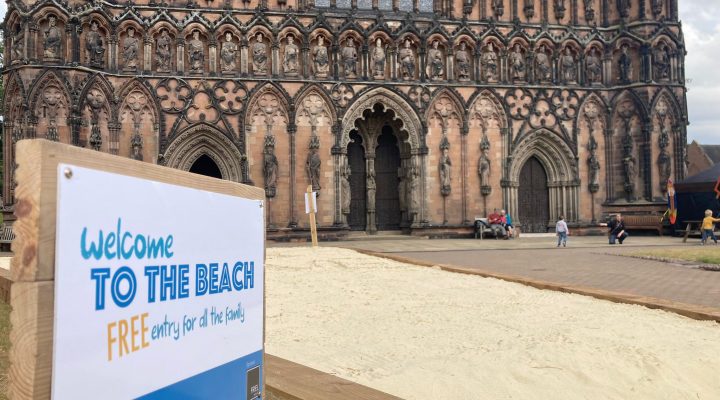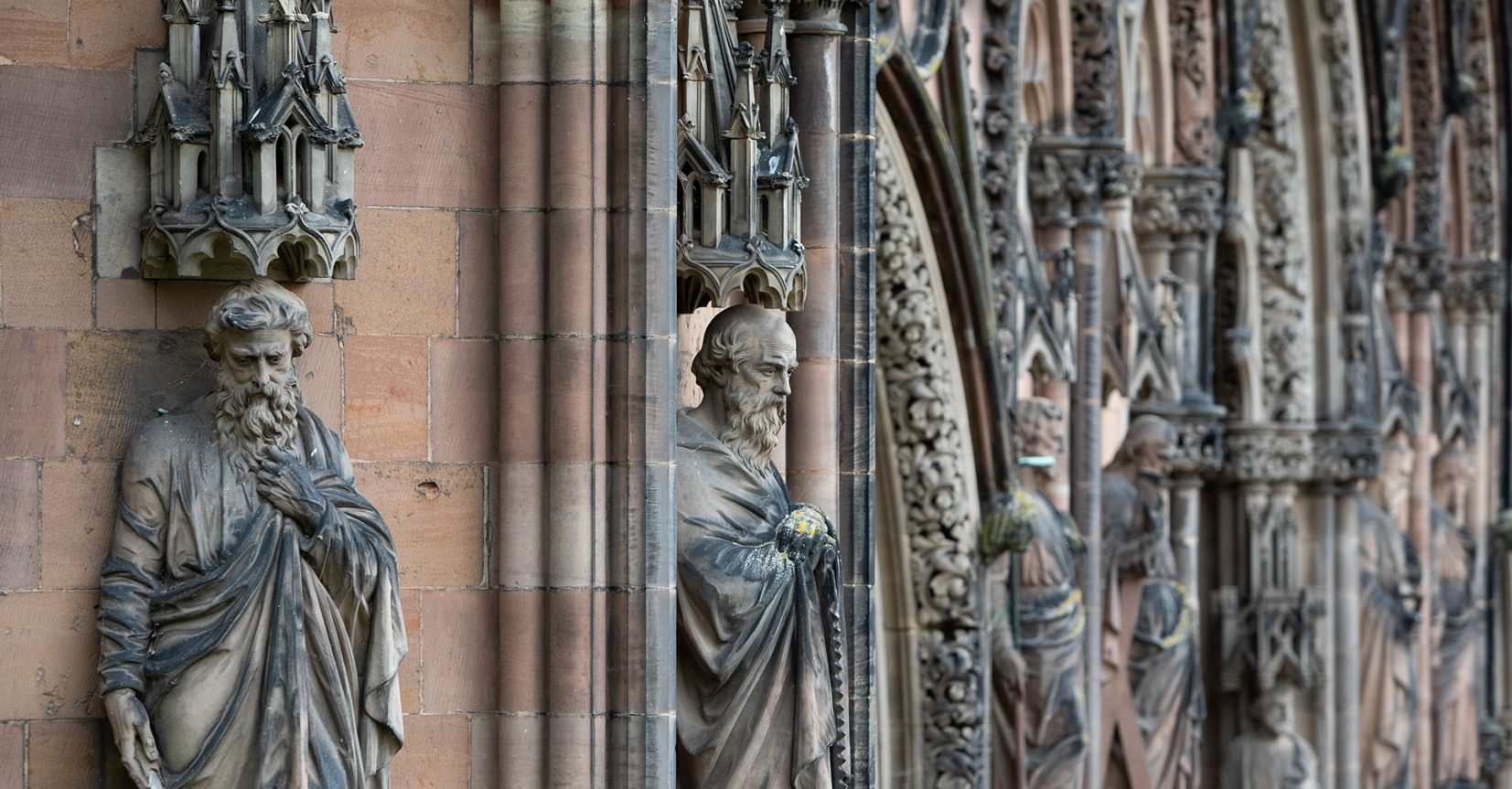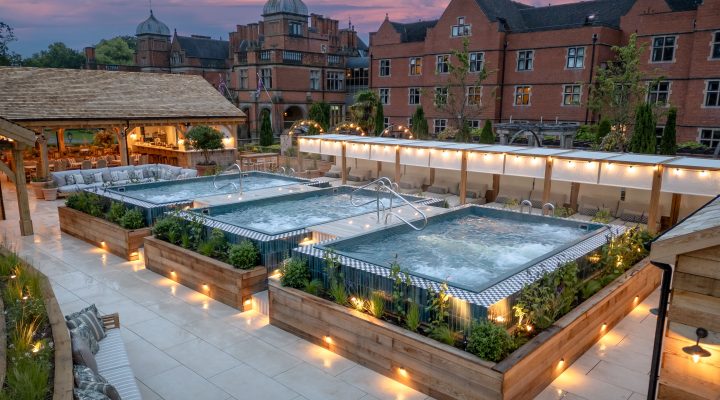

Blog: A 1,300 year old Cathedral’s role in placemaking
In the purest sense, the definition of placemaking is:
A process through which places that people want to live, work, or explore are created.
In this months blog, Simon Warburton, Executive Director of Lichfield Cathedral, We Are Staffordshire Place Board member and a Director on the Lichfield Festival dives into the role of Lichfield Cathedral, as the city moves into its masterplan of development.
A historical site of great importance:
Lichfield Cathedral was originally founded in 700 AD, making it one of the earliest cathedrals in the UK and therefore a historical site of great importance. The Cathedral is dedicated to Saint Chad, who travelled to Lichfield from the northeast to bring the Christian faith to Mercia.
Following the death of Chad (672), the first Cathedral was built and with it, Lichfield began to grow becoming one of three nationally important pilgrimage destinations.
I might argue then, that the Cathedral has been involved in place making for over 1300 years with the original street pattern formed because of the prominence of Lichfield as a national pilgrimage destination. A pilgrim, literally meaning, a traveller on a journey to a Holy place. It’s no wonder then that one of our core areas of activity centres so neatly around tourism.
The use of a Cathedral in 2023:
Cathedrals are amazing places that are not only iconic in their cities, but contribute £235m to their local economies, support over 6000 jobs, support 15,400 volunteers who donate over 900,000 hours (which equates to 500 FTE), 14.6m people visit annually, and we host 9500 events that’s on average every Cathedral hosting 2 events every 3 days. (Source: Association of English Cathedrals)
Something I hear all the time, is that Lichfield Cathedral must be the main draw for visitors to the city. However, I’m afraid, despite the large national visitor numbers, this isn’t true. I think the last report of visitor data for the city suggested over 2m visitors, and yet my annual visitor number is closer to 100k. Something is surely amiss, either the Council’s data is incorrect, or everyone is visiting a different Cathedral (take a bow St Mary’s!), but either way, It might be fair to say, what are you doing about it then? Well..
- We ensure the Cathedral remains free for visitors, but even with a requested donation via a paid professional team, the average level of giving is less than a cup of coffee!
- We run an innovative events programme and we’ve developed a reputation for light shows, with our annual Christmas light show garnering national press coverage. Visitors have walked on the moon, played on grass, travelled through time, visited a beach, and sung under 10,000 doves suspended in the Nave.
- We are a venue for hire with a varied programme of events from tribute acts, touring orchestras, to festivals.
- We respond to key social issues by providing a platform for debates such as the European referendum, and more recently child poverty. We also became the first Cathedral to be used as a vaccination venue during the pandemic. We were a place of welcome during the heating crisis of this last winter. We’ve facilitated a community led relocation programme for a refugee family. And we’ve offered an oversubscribed holiday support to pupil premium children before they return to school (also ensuring they receive a hot meal).
Surely the Church is rich I hear you cry! Well, all Cathedrals are an entirely self-financing business:
We receive 6% of our operating costs from the Church of England. But for the other few million it takes to keep us going annually we are reliant on generating sufficient income from the generosity of the public, the income from our estate, and through the commercial use of the Cathedral.
Whilst our congregation numbers are good for this size of city, their income provides less than 10% of our operating income. The properties are as much a liability as they are an income source. And whilst the Cathedral is a very large building, one use of the space means any other activity is almost impossible.
Do also bear in mind, that works to the Cathedral itself fall entirely outside of our operational budget, and again we receive no guaranteed support from the government or Church of England. The size and scale of financial liability is eye watering, with the current spire project costing £1m.
In order to maintain our visitor destination profile, we find ourselves reliant on the good work of organisations such as We Are Staffordshire and Enjoy Staffordshire who help amplify our message. Staffordshire desperately needs to be put on the map and not just be the place you skip through using the M6 Toll.
Maintaining the role of a Cathedral in a changing environment:
The Cathedral desperately needs to make investment in its visitor and volunteer facilities. In order to be a church, visitor attraction, and venue for the twenty first century, we need to take some bold steps in addressing the constraints of the building, including adding toilets, improving accessibility, and addressing the climate emergency.
The Cathedral will need to work closely with local stakeholders to share a vision for what our future might look like. Rather than be on the periphery of the city’s masterplan, we need to be an essential part of it. This will need to be bold, visionary, and perhaps a little controversial in order to meet our needs.
Our history and built heritage should be a platform for those planning for growth. Whether through planning policy or tourism strategy. Too often history and heritage are used as reasons not to do something. The city evolved through the location of the Cathedral, and it can be used again to grow once more. The city’s success will also be the Cathedral’s success.
A good example of this are the measures we must take to address our carbon footprint. It would be easy to say the Cathedral is too precious to ever consider sustainability measures. However, what does that say to our community? We are all in this together and everyone is going to have to make sacrifices. For the Cathedral this might mean solar panels on its roofs. It’s funny that, despite the inevitable outcry and controversy, where this has been achieved at other Cathedrals, images are used showing best practice in delivering on the sustainability agenda (see Gloucester and Chester Cathedral).
Cities need to use their Cathedrals to help complement current or lost public services. What if we could rethink how these services were delivered. Cathedrals are centrally located, often have spaces that could be used, and a willingness to help others. Imagine a city where there doesn’t have to be a wait for young people in crisis? What if the Cathedral could further develop our education programme ensuring all pupil premium children get a head start returning to school? What if there were a social prescribing model that could meet the communities needs? Could the Cathedral continue to facilitate families escaping persecution?
That would be a city I would want to live in.






